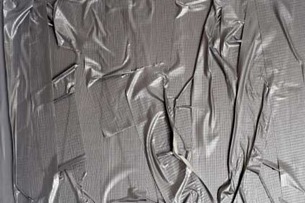My Top Three Takeaways from the Decker Communications Made to Stick Messaging event.
When I watch TV commercials, I’m dismayed that the messaging is just so bad. Virtually none of the TV commercials you watch have a chance of being remembered 15 minutes into the future. They’re just not sticky, and it’s easy understand why. Those commercials are produced using a creative framework, and instead should be produced using a stickiness framework.
This past Tuesday I participated in Decker Communications Made to Stick Messaging event, featuring Made to Stick“
co-author Chip Heath and Decker Executive VP Kelly Decker. It was a full-day seminar and training session on how to create messages that influence. Sticky, or memorable, messages need structure, they need a framework. Sticky messages are not simple recitations of facts, figures, features, benefits.
“You can’t build believability out of a mountain of facts and figures. You can’t even build it out of stacks of elegantly crafted words.”
– Bert Decker, You’ve Got to Be Believed to Be Heard
So what makes something sticky? What enhances a person’s ability to not only re-call a message, but also be influenced by it? At the end of the event, without referring to my notes, I jotted down the top three things that stuck with me.
Take away #1: Don’t Bury the Lead
The lead is a journalism term that means the most important information. It’s the most essential thing your audience should know, and they should know it up front. When you craft a marketing message, you should ask yourself, “What’s the one thing, the most important thing, I want people to know?” Lead with that one thing. Don’t bury it in a mountain of data or toward the end of some intricate, clever story. Give people the most important thing right up front.
Leading with the most important thing makes it easy to structure the rest of your message and it makes it easy for your audience to understand what you are trying to say.
Take Away #2: Eliminate Abstractions.
What do these phrases mean:
“We specialize in dimensionalizing your offerings for greater impact.”
“Our mission is to take your business to the next level.”
“These initiatives will make America a better place to live.”
They’re abstractions and to most people, they don’t mean anything. They’re just not sticky.
“Abstraction makes it harder to understand an idea and to remember it. It also makes i harder to coordinate our activities with others, who may interpret the abstraction in very different ways.”
– Chip Heath & Dan Heath, Made to Stick
The solution is to be concrete. What makes something “concrete”? Chip and Dan Heath say in Made to Stick that “If you can examine something with your senses, it’s concrete…concreteness boils down to specific people doing specific things.” That can be as simple as attaching illustrations to your abstract language.
For example, “We do the heavy lifting for you” is an abstract claim. What does that mean if you are a HR management company? You can make that abstraction concrete by substituting an illustration or example of what you mean by heavy lifting, such as saying “it’s like taking all those résumés you receive and loading them on a forklift, we drive that forklift away and process every résumé for you.”
Take Away #3: Have a Cool Title…Or Be Unexpected
At the start of the Made to Stick Messaging event, each participant had to stand up and deliver a simple introduction. I stood up and declared that I was the “Chief Officer of Awesomeness” at The Marketing Spot. Almost everyone I spoke with for the rest of the day made a comment about my title. Even as we sipped wine at the after-event social hour that evening, someone asked me how I got that title. Why was my title so sticky? Because it was unexpected.
People expect you to have a title like CEO, President, Sales Manager, but they don’t expect you to be the person in charge of awesomeness. Unexpectedness captures attention and enhances memory. Your marketing message works the same way. If you only say what’s expected, no one will notice. Commercials filled with price, features and benefits are expected, and quickly forgotten.
Implementing Stickiness
How can you add concreteness and unexpectedness? What can you do to make your marketing message sticky? For information on creating memorable messages, you can read The Secrets of Stickiness or buy the book Made to Stick. Decker Communications also has several communications training programs that help you frame your message.
If you liked this article, please consider subscribing. For updates on new articles: Receive The Marketing Spot by Email or ![]() Get The Marketing Spot in a blog reader
Get The Marketing Spot in a blog reader


[…] I’ve covered creating your advertising message here: Your Marketing Message: The Club or The Rose? How to Handle The Brand Discovery Sequence Made to Stick Messaging […]
[…] They break your guessing machine and have a stickiness factor. […]